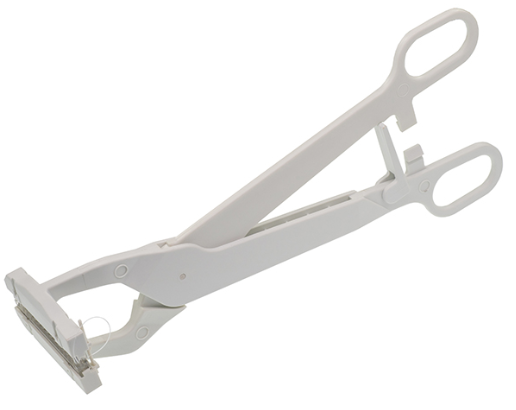Purse needles consist of two suture needles and one suture thread.According to the length of the suture,it is divided into two specifications.The suture is No. 0 non-absorbent suture with a diameter of Φ0.350-Φ0.399mm.The needle diameter is Φ0.90-Φ1.04mm; the needle material is 12Cr18Ni9,and the suture material is polyamide 6 or polyamide 6/6.The product is supplied sterile,sterilized by irradiation,and single-use.
Purse medical application range/intended use
Used in conjunction with suture forceps,it is suitable for purse string ligation in anastomosis.
Easy to operate:built-in purse and fixing nails,
convenient for high or low surgical suturing purse;
Eliminate cross-infection: one-time use;
Time-saving and labor-saving:the wallet is automatically formed in one clip.
Applicable departments:
Thoracic surgery,
gastrointestinal surgery,
general surgery, anorectal surgery.
Applicable surgery:
Esophagectomy.
Subtotal and total gastrectomy.
gastric stromal tumor resection.
Colon and rectal resection.

PURSE-STRING SUTURING METHODS
The purse string suture technique is a running suture used as a pocket retraction thread to close the entry around the lumen.For example; it can be used to anchor appendage roots in the gut.The purse string suture is a simple technique that can be used to achieve minimal scarring and reduce the surface area of circular wounds.This suture is placed prior to insertion of a "stomy" tube,or may be used to reduce rectal prolapse or to temporarily close the anal sphincter prior to rectal surgery.It may also be used to cover a hole in the chest wall after a foreign object such as a rod has been inserted.If sutures are placed after tube placement, the lumen may be disrupted.Placing a pocket of suture around the anal sphincter prevents the passage of feces that could contaminate the surgical site.A series of sutures are placed around the stoma tube,allowing the needle to reach where it started.When it's strained,it wraps paper towels like a cloth bag.Long seams are left at the ends to hold the suture taut for knotting. he ends of the suture are pulled around the tube and tied together.This will create a seal around the tube.Tooling may be required to turn the edges in in order to provide mucosal inversion and a tight seal.Purse string sutures allow complete or partial closure of circular skin defects postoperatively.It may be especially suitable for older patients due to loose skin.The tension provided by the sutures advances the skin evenly from the entire circumference of the wound, resulting in a significant reduction in defect size and increased hemostasis at the wound edges.When reviewing the history,technical changes,advantages,and potential complications of the purse string suture;it appears to be beneficial after resection of nonmelanoma skin cancer as well as after local melanoma resection.In addition,this technique is particularly useful for patients who cannot change an active lifestyle within one week of surgery, who are receiving concomitant anticoagulants,antiplatelet agents,or both,and for patients with extensive postoperative deficits.Otherwise skin graft or large flap.Typically, surgical wound sites show excellent long-term functional outcomes after partial or complete closure with purse string sutures.The purse string suture was first described in dermatological surgery.This is a simple technique that can be used to reduce the surface area of a circular wound to minimize scarring.To complete the reconstruction and insert a small skin graft, the wound is sutured to reduce the length and lateral dimension of the wound. In addition to bilateral adjacent tissue grafts, purse string sutures were used. With this procedure, larger facial imperfections can be concealed or reduced.Purse-string suture is recommended as a single procedure for permanent closure of small to medium skin defects, especially when side-by-side closure is not recommended due to laxity of weak tissue.This technique is designed to reduce or eliminate the size of the wound depending on the degree of tension and the size of the wound.This is a niche technique as the purse bag effect tends to cause a slight shrinkage of the surrounding skin (and may resolve over time), which is an acceptable feature in areas such as the forearm and back, but less cosmetically Ideal for sensitive areas such as the face.The nature of the technique suggests that at any point during the suturing process,weakening of the sutures could lead to wound dehiscence.However, for this reason larger sizes of suture material are often used.
Post time: Nov-28-2022





